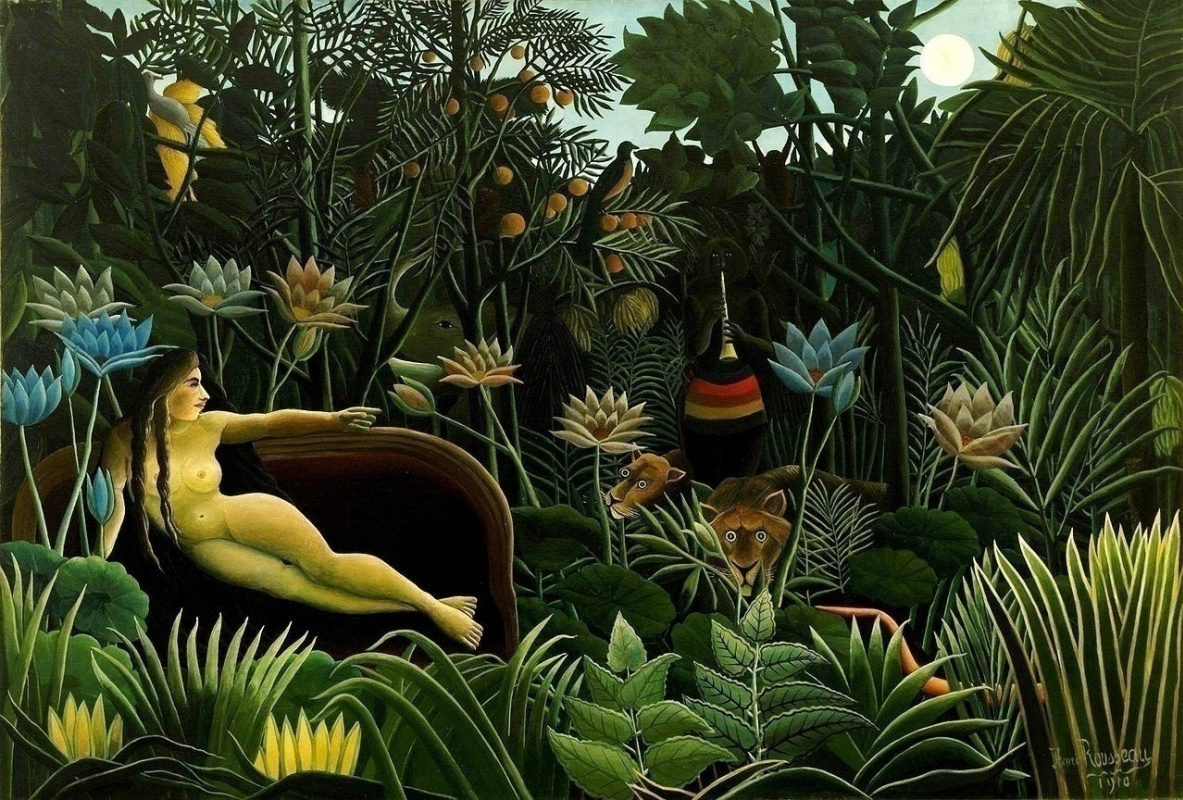
1. The iIgnoramus at the Salon of the Independent (Paris, 1885): perspectiveless!
The jury of the official Salon would never accept his work, but the Independent gladly took the artworks of the strange self-taught. Rousseau did not bother himself with the technique and or laws of perspective, but conveyed it through shades, intuitively taking into account the colour change with distance from objects.
At exhibitions, where Rousseau’s paintings were located in far corners, spectators gathered and loudly made fun of the simple-minded ignoramus, playing kind of a game: who would reveal the depth of Rousseau.
2. Fantasy... at customs!
The modest customs officer (hence the nickname Le Douanier — The Customs Officer) spread the legend that while serving in the army he visited Mexico — after all, he had to explain somehow where this whole world of lush thickets, wild biblical animal fights, and huge fabulous flowers taller than human growth came from.We see Rousseau’s Dream (title illustration), where he did not hesitate to teleport the sleeping Jadwiga (the stranger is the subject of his paintings and a play) into this fantastic forest right along with the sofa.
3. Picasso & Co: recognition
"Straightforwardness, passion, genius," one of the critics described Rousseau. Paul Signac, Odilon Redon, Camille Pissarro, Paul Gauguin, all of them highly appreciated the art of Rousseau. Artists and poets gave him their friendship, made fun of his gullibility and loved him for his spiritual purity and talent. Watch just one example, but a great one!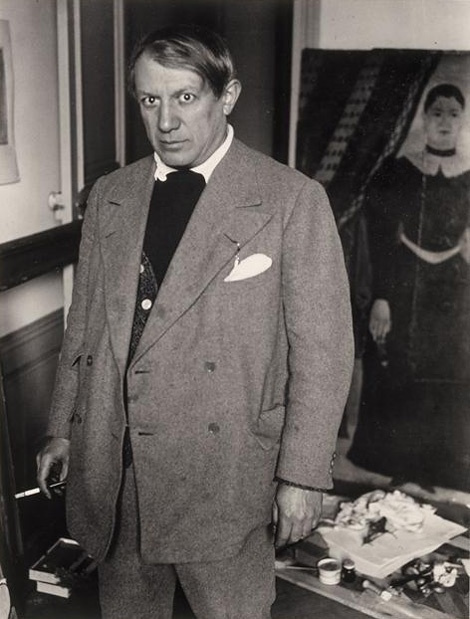
Pablo Picasso did not part with the Portrait of a Woman (Jadwiga), which he acquired for 5 francs even before meeting the painter.
Picasso in front of the Jadwiga portrait by Rousseau, Paris, 1932. Photo — de Brassaï
Archival photo, Picasso Museum, Paris
4. The poet’s great ship needs… a place in Russia!
Grateful to Guillaume Apollinaire for his dedication of a poem, Le Douanier painted a picture, The Poet and His Muse, where he depicted the poet’s "muse", who was famous throughout Paris for her wasp waist, as a very solid lady. He explained to the offended Apollinaire that "a great poet needs a great muse". The painting that the poet rejected was bought by the Moscow merchant Sergei Shchukin, whose collection laid the foundation for the collections of French modernist painting in the Hermitage and the Pushkin Museum.
5. Who is this scarecrow and what does he know?
The short-legged dishevelled creature jumping off a lizard horse is a lady, and the man is Rousseau himself, they are the only living figures in the drama of his largest canvas. Among the pile of bodies, he depicted the first husband of his second wife (the one on which the bird sits).
6. Poems and the colour element: what is original with Rousseau
— Titles: abandoning the laws of painting, Rousseau stepped from the end of the 19th century immediately into the end of the 20th century. Just as conceptualists do now, he accompanied his creations with long captions, sometimes versed!"The lion, being hungry, throws itself on the antelope, The lion, being hungry, throws itself on the antelope, and devours it. The panther anxiously awaits the moment when it too can claim its share. Birds of prey have each torn a piece of flesh from the top of the poor animal which sheds a tear. The sun sets."
— Shades: The artist boasted to renowned Italian critic Ardengo Soficci that he used 22 shades of green in his Jaguar Attacking a Horse. Shades of blue and dark tones were also in favour (the subject of Paul Gauguin’s admiration).
— Materials: although the seller offered to buy the Portrait of Jadwiga for its huge canvas, many of Rousseau’s works were made on a low-grade and cheap bases, in contrast to a very high-quality paint layer. Therefore, one of his works in the collection of the Pushkin Museum has already been transferred to a new canvas.
7. In the beginning was singing
They say that at school, Henri was only good in mathematics and singing. An ingenious self-taught, he composed Waltz Clemence (in memory of his deceased wife), two theatrical plays, Visiting an Exhibition and Revenge of a Russian Orphan. He gave private lessons in solfeggio, recitation and drawing. He played the violin for his friends.
8. Not to jail!
One of his students profiteered in the teacher’s gullibility and involved him into illegal cashing. The artist was brought to trial and given a suspended sentence for two years: seeing his paintings as the evidence of the artist’s complete naivety, the audience burst into laughter. In gratitude for the mitigation of the sentence, the happy Rousseau, invited the judge to paint portraits of his loved ones right in the courtroom. In general, he often painted portraits and gave them to his friends.9. Paintings as victims of prejudice
In the Rousseau family, the artistic profession was associated with depravity. After the death of his friend, Robert Delaunay rushed to his daughter, but it was late: she tore up and threw away hundreds of his drawings, only notebooks survived, where Rousseau pasted newspaper reviews of his work.
* the illustration is the Portrait of the Artist’s Second Wife (with a Kerosene Lamp), 1903
10. Price adventures
About 100 paintings by Henri Rousseau are now known. They are scattered all over the world in museums and private collections. It is believed that at the end of his life Rousseau achieved commercial success, although the once mayor of Laval, the artist’s hometown, refused to buy his painting for 2,000 francs. Today, Le Douanier could make a fine fortune, his small works are estimated from 300,000 to 500,000 euros — take a look at the prices! In 2002, the Landscape with Factory Chimney was auctioned off for $ 361,500 with a starting price of $ 100,000.Rousseau always got into a good company, even his paintings do!
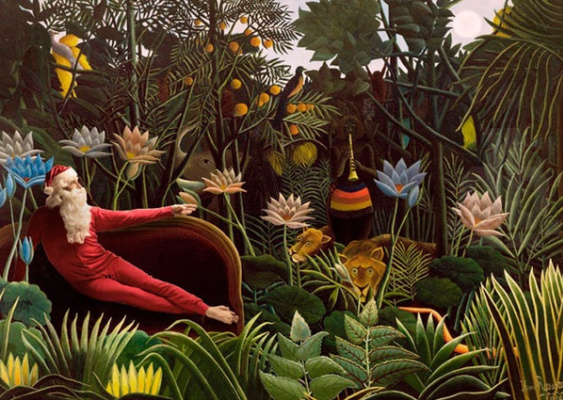
In 2002, 30 paintings by Picasso and Rousseau were stolen from a private collection in France. It happened on the night of December, 31 so the joke about Santa’s gift was just a terrible dream of the collector! And in 2011, an auction sold items from the house of Michael Jackson, including Henri Rousseau’s paintings.
Written by Inna Lostman







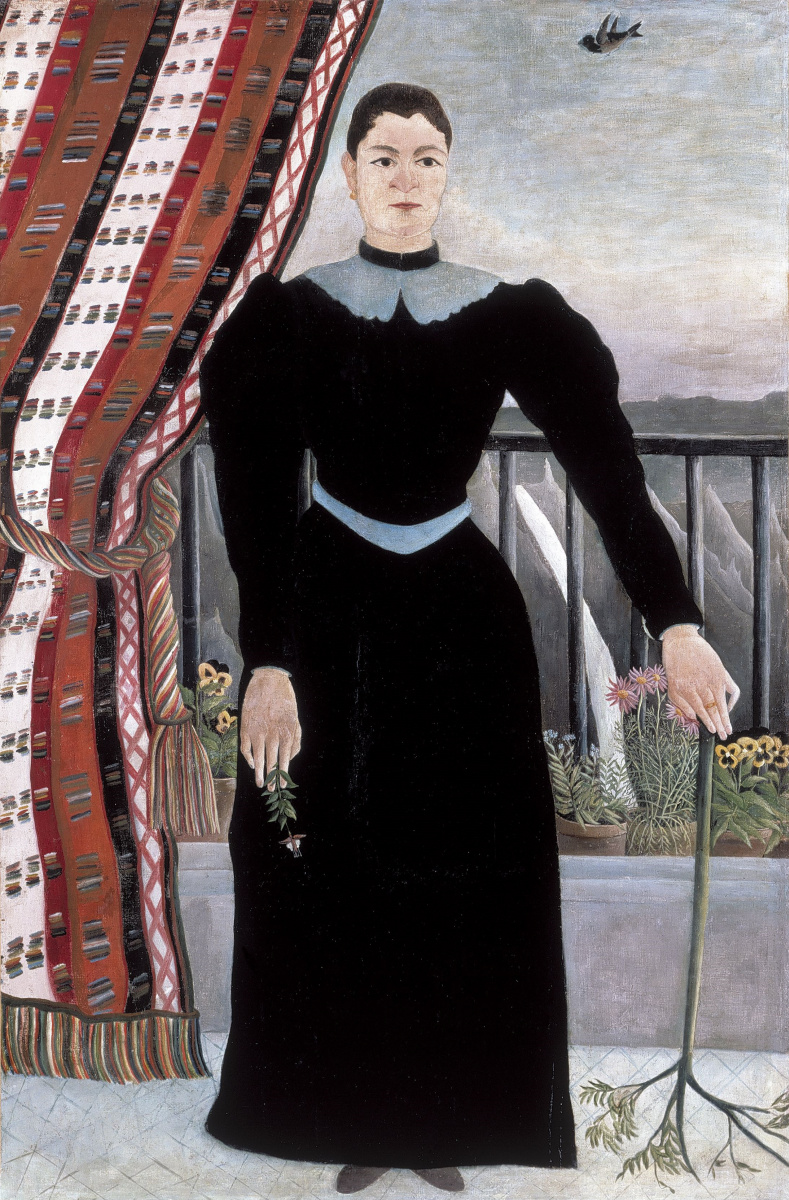
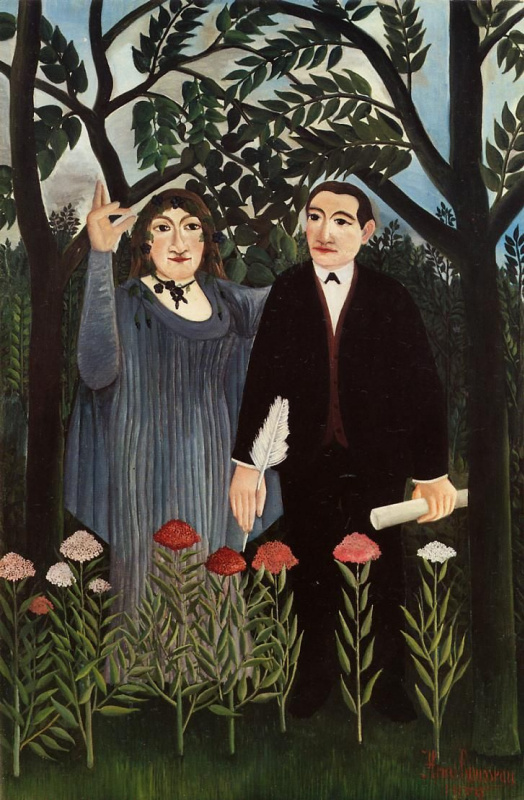






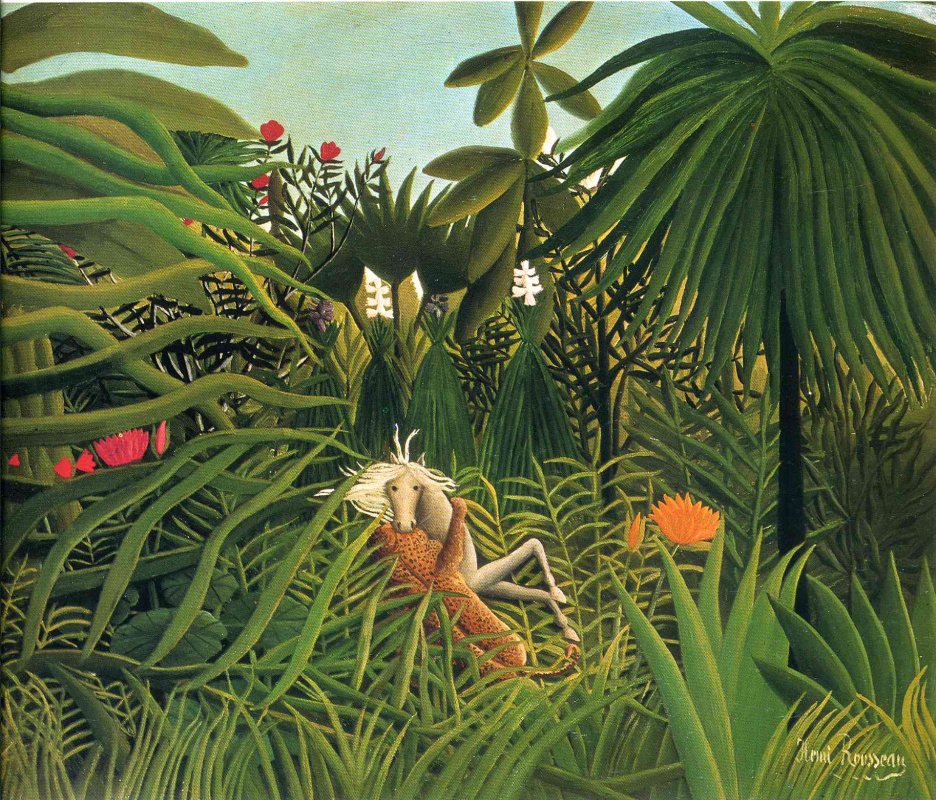
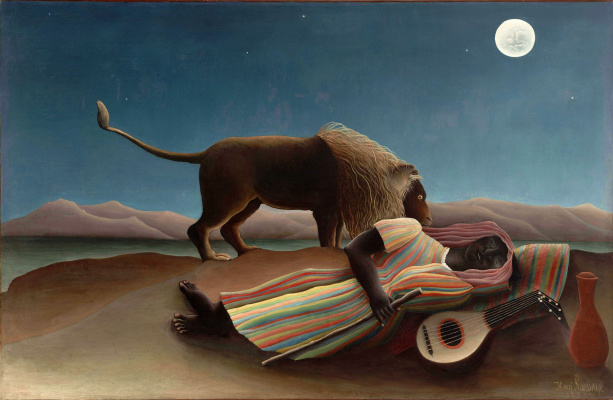
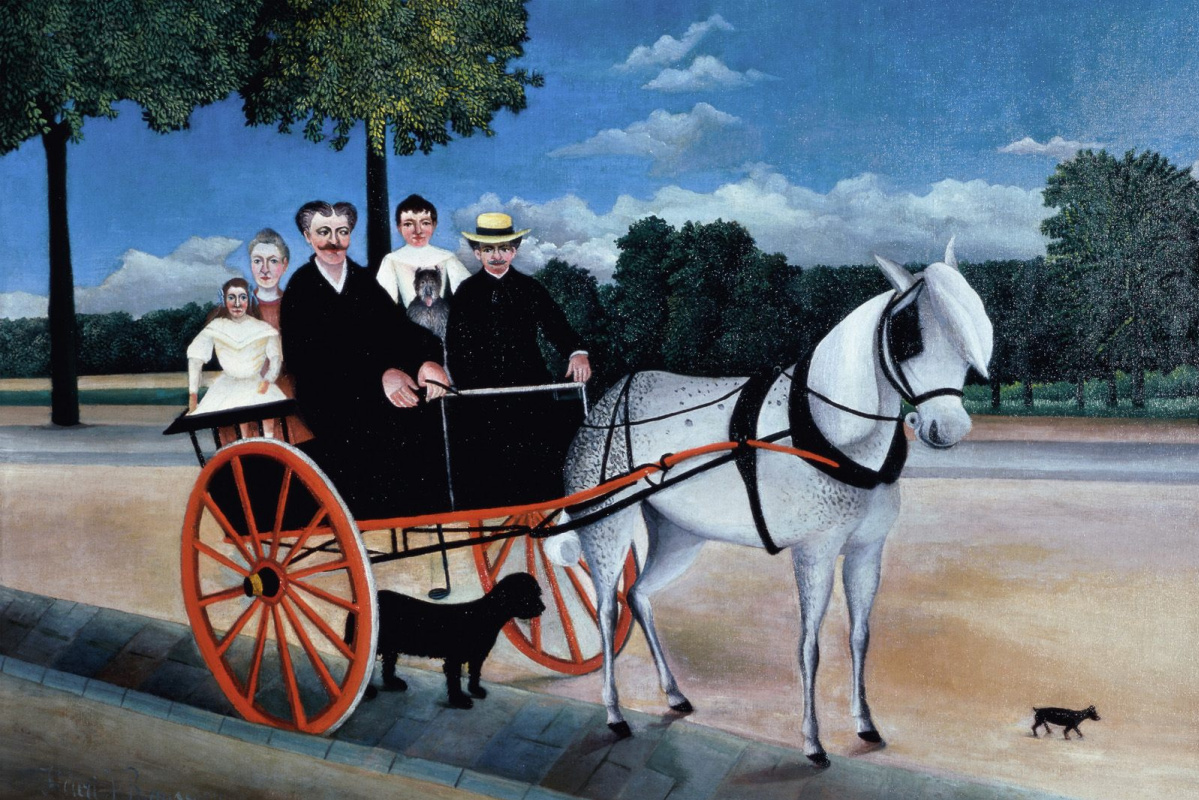

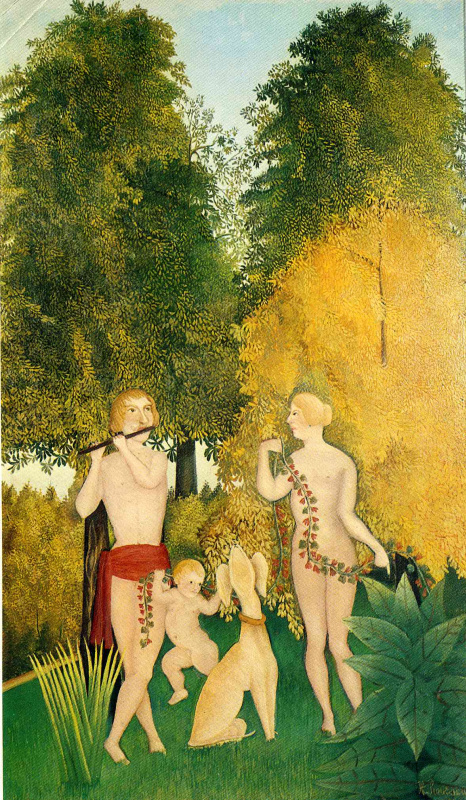
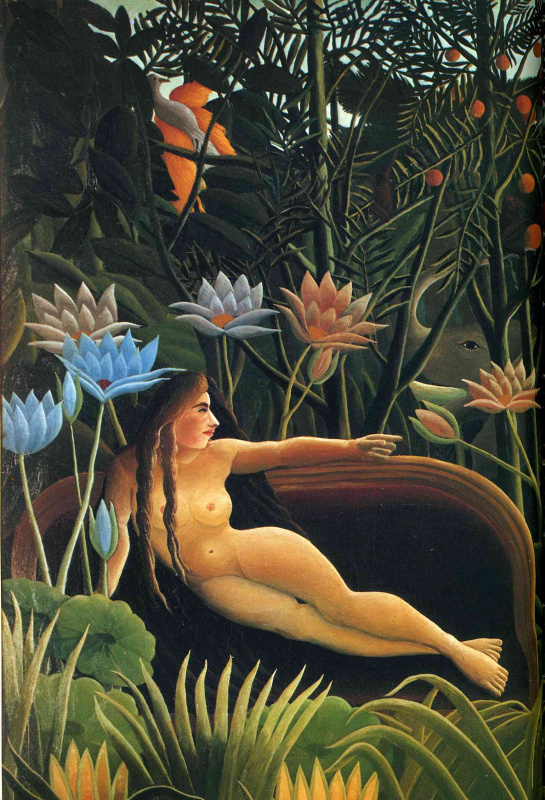
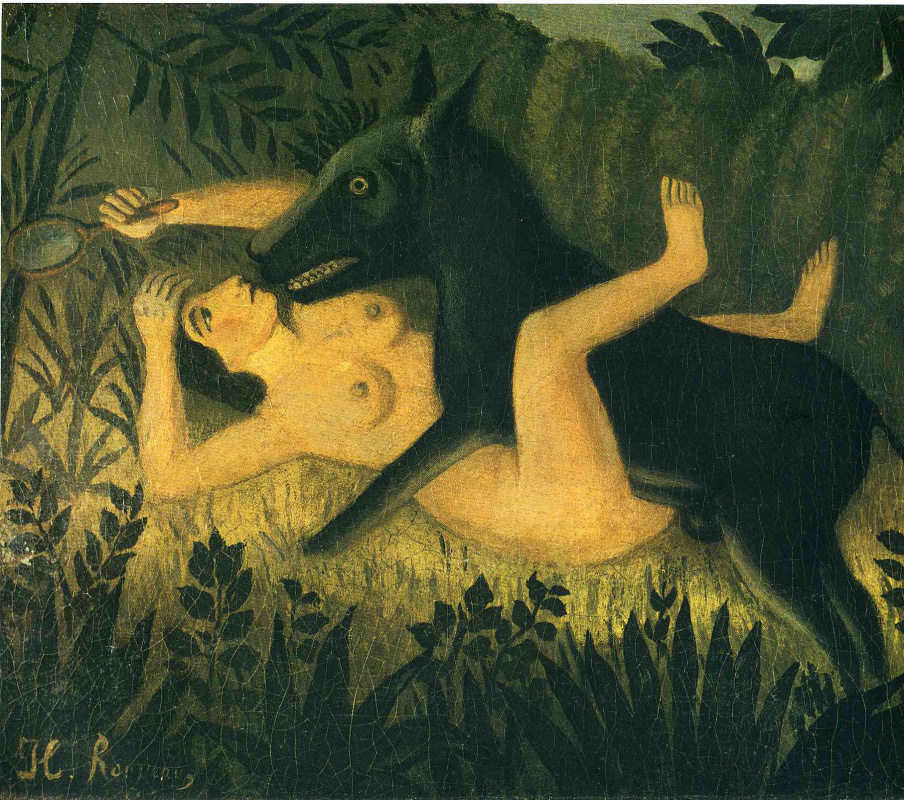
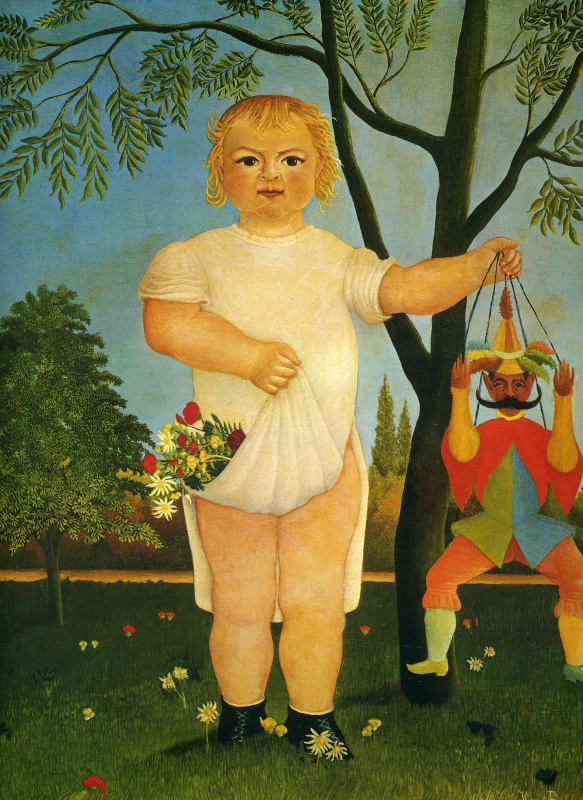

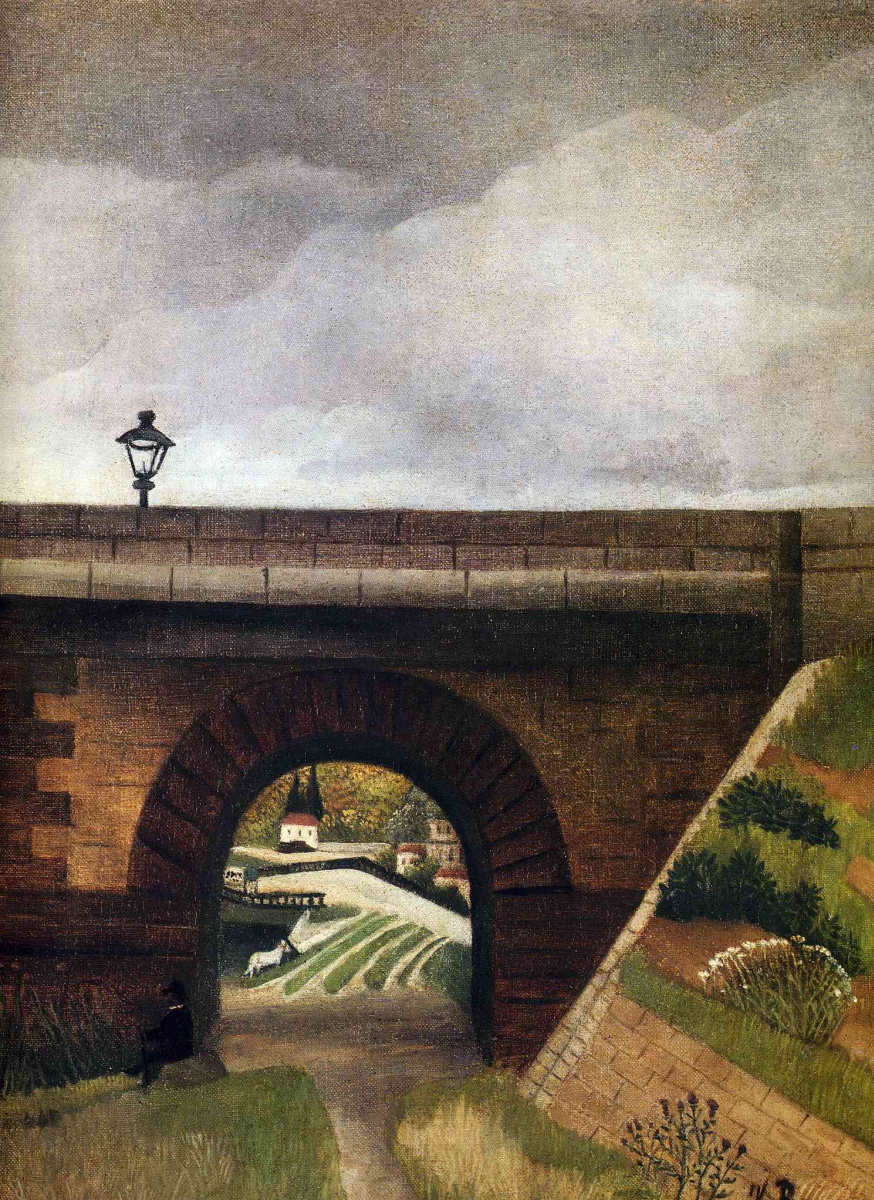


«В 1907 году Пикассо обнаружил в магазине папаши Сулье огромный женский портрет. Единственное, что он смог разглядеть, была голова, которая выглядывала из-под ничем не примечательных картин. Однако для него этого было достаточно, чтобы прийти к выводу: перед ним весьма совершенный и мастерский портрет, написанный с чрезвычайной убедительностью и новизной.
Он спросил папашу Сулье, можно ли купить это полотно за пять франков, на что торговец ответил: «Конечно, эту дрянь написал художник по фамилии Руссо, но сам по себе холст вполне хорош, и вы смогли бы найти ему достойное применение». Когда они вытащили заинтересовавшее его полотно из-под груды художественного мусора, Пикассо с восторгом обнаружил, что это был портрет женщины в полный рост, в черном платье с синим воротником и поясом, которая стояла перед открытым окном. Рядом с ней висела длинная полосатая портьера, а позади сквозь балюстраду виднелся пейзаж с множеством цветов.
Когда Пикассо позднее показал это полотно самому Руссо, старик объяснил, что это был портрет польской школьной учительницы, написанный им много лет назад. Штору он включил в картину, чтобы придать ей восточный колорит, а пейзаж представлял собой хорошо известный ему район фортификаций вокруг Парижа. Фактически Пикассо случайно отыскал один из шедевров Таможенника. Впоследствии он постоянно держал это полотно возле себя в числе самых любимых картин.»